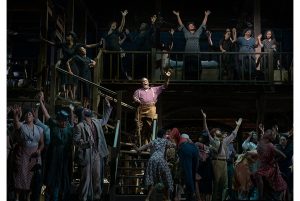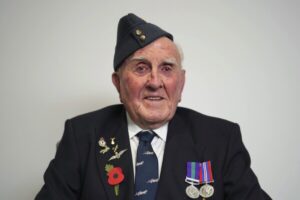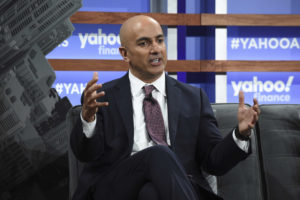Since Election Day 2020, pundits and historians have pointed out that many Black women organizers throughout U.S. history deserve credit for laying the groundwork for the surge in Black voter turnout nationwide. That groundswell helped elect Joe Biden and Kamala Harris as President and Vice President of the United States and gave Democrats control of the legislative branch after the Georgia U.S. Senate run-off, which resulted in the election ofthe first Black Democratic U.S. Senator from the South.
One of the women who paved the way for the leadership of Black voting rights organizers like Stacey Abrams is Rosa Parks, but it might not be for the reason you think.
Parks, who died in 2005 and whose birthday is Feb. 4, is usually talked about—especially during Black History Month—as “a tired seamstress” who was arrested for refusing to give up her seat to a white passenger on a Montgomery, Ala., bus in 1955. This act of courage sparked the Montgomery Bus Boycottwhich ended a year later when the U.S. Supreme Court upheld a ruling declaring racially segregated buses unconstitutional and cemented Parks’ place as one of the most recognized figures from the civil rights movement of the 1950s and 1960s. But in recent years, there’s been more awareness of the fact that Parks had been a civil rights activist for more than a decade before that day on the bus, and that she wasn’t even the first Black woman to refuse to give up her seat on one of the city’s buses. Parks’ activism started with wanting to register to vote in the 1940s.
“She’s galled by how Black people, including her younger brother, Sylvester are serving in World War II, but they can’t vote at home,” says Jeanne Theoharis, author of the Rosa Parks biography The Rebellious Life of Mrs. Rosa Parks and co-author of a young adult version out Feb. 2. “So very much one of the things that motivates her to get involved in the Montgomery NAACP is she wants to register to vote. This is really where her independent activism gets started.”
Parks went to her first Montgomery NAACP meeting in December 1943, where she was elected secretary of the chapter. Back then, only 31 out of several thousand of the city’s Black residents were registered to vote, according to Theoharis and historian Martha S. Jones’ latest book on Black women’s voting rights Vanguard. Many voter registration requirements designed to suppress the Black vote were written into the 1901 Alabama Constitution. Prospective voters who didn’t own property were subjected to additional tests. In some cases, a white person was necessary to vouch for a Black person, and the names of successful registrants were published in the local newspaper to invite objections by white residents, according to Theoharis’s book.
Parks’ family hosted Montgomery Voters’ League meetings to keep fellow Black citizens motivated to register amid so many obstacles and “without having to go to a white person and be vouched for,” as Parks is quoted saying in Theoharis’s book, which combs through the activist’s writings. Parks herself lamented how her husband Raymond tried to get members of a men’s social club interested in registering to vote, but got pushback from people who thought it was “too dangerous or too risky” and described prospective Black voters as “real discouraged” by registrars who were “so hostile.”
“If they didn’t come right out and be abusive, they would act as if you just weren’t supposed to be there even talking about registering to vote,” Parks said, according to Theoharis’s book.
Parks herself tried to register three times between 1943 and 1945. She was flat-out refused the first time, and during her second attempt, Parks was thwarted by a difficult questionnaire, another Jim Crow-era voter suppression tactic to keep Black people off voter rolls.
Theoharis says that the times that Black people could register to vote were different from the times white people were given “so that Black people didn’t get to see how white people were treated. [Black people] would get different, much harder questions. Two white women actually come in while [Parks] is trying to register, and she sees the voter registrar’s signal to these white women that they should just wait until Parks is gone and then she’ll help them.”
Finally, on her third try in 1945, convinced she had answered the questions correctly, Parks copies down her questions and answers to have on hand for future legal challenges, and registrar saw her do that and approved her application. On top of the test, she had to pay $1.50 for each year she was eligible to vote. The poll tax was $18 in total, which is equivalent to about $260 in 2020. She cast her first vote for James Folsom for Governor of Alabama, and continued to help others register to vote by through the local NAACP youth council’s voter education programs. It was a rare accomplishment. Though her husband Raymond had worked on pooling money among members of a men’s social club to help people pay poll taxes, he wouldn’t be able to register to vote until he and Parks moved to Detroit in the late 1950s.
“Voting rights were the foundation of Parks’s political training,” as historian Martha S. Jones writes in Vanguard: How Black Women Broke Barriers, Won the Vote, and Insisted on Equality for All.
Theoharis says Parks and Montgomery NAACP branch president E.D. Nixon worked to “transform the branch into a more activist chapter” and form a partnership that is “going to change the face of American history.”
Frustration over the difficulty registering to vote was one of the many moments in her long activist career that had made Parks so resilient and gave her the strength to refuse to give up her seat on a bus on Dec. 1, 1955. Twenty years after successfully registering to vote on the third try, she would watch President Lyndon B. Johnson sign the Voting Rights Act at the White House on Aug. 6, 1965.
When the writer Studs Terkel asked her in a 1973 interview if she could elaborate on what was going through her head back on the bus on that fateful day in 1955, instead of stating one reason, she started to rattle off milestones in her life that led up to that point, and among them was “trying to become a registered voter under hazardous conditions, such as being denied a number of times, and feeling that there was a threat just to become a registered voter and cast my ballot to elected offices.”
“There’s no way you want to understand the path to Reverend Warnock’s [U.S. Senate] victory without seeing all of this groundwork that people are laying,” says Theoharis.
Parks’ and voting rights organizers’ persistence offers a teachable moment for young activists.
“There’s a lot of things that are wrong with the popular version of Rosa Parks, but part of it is how for many years, she and this smallish group of activists are [working] and how discouraging it is, and so the fact that she keeps going I think speaks to a kind of courage we don’t always realize about her,” Theoharis says. “They keep going, even when they can’t see that there’s going to be change in their lifetime.”




